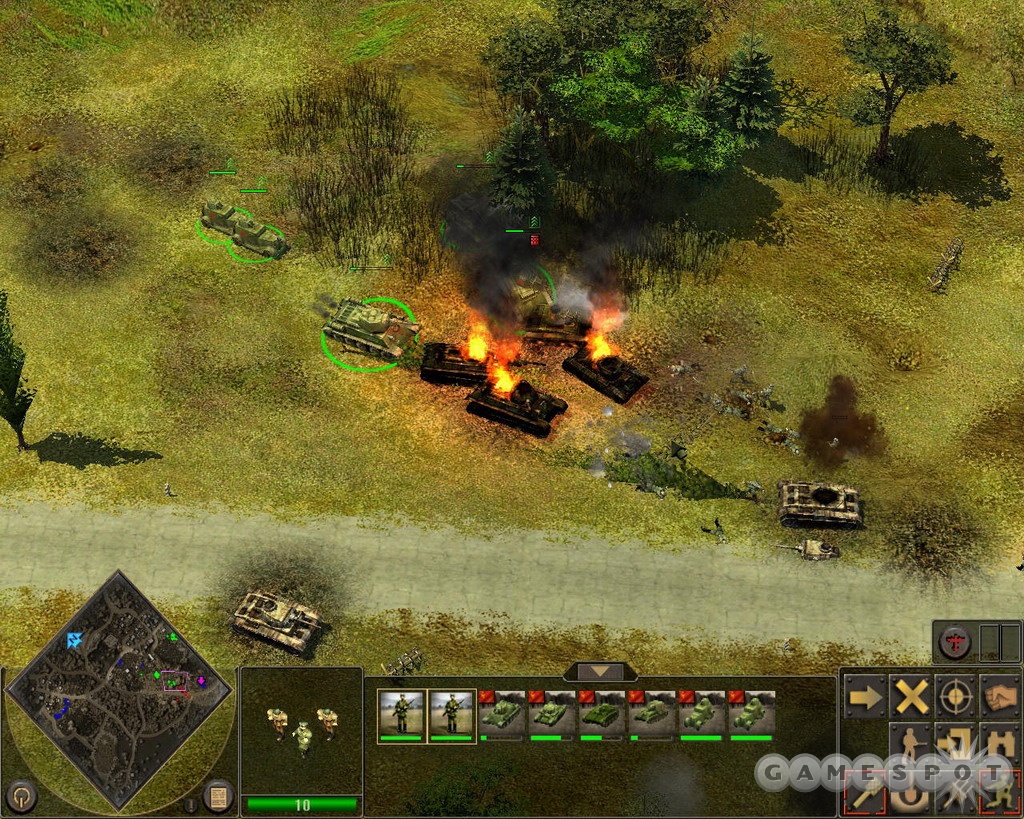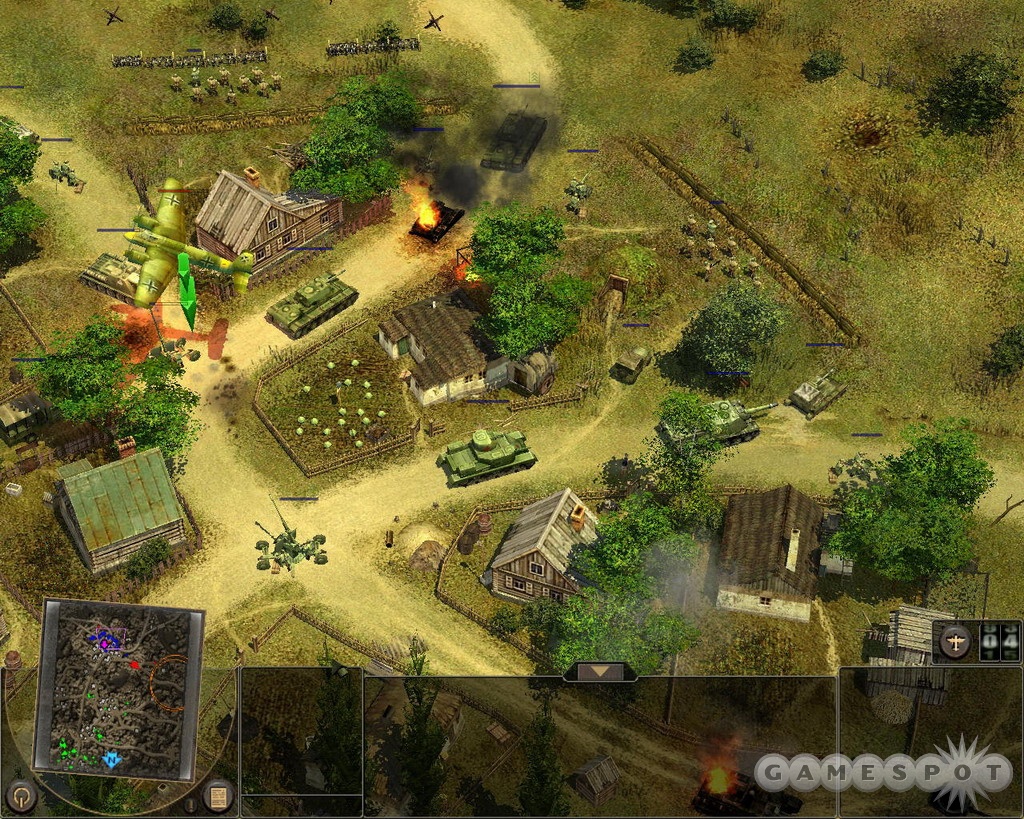One thing's for sure--Nival Interactive sticks to what it knows. Though the Russian developer regularly branches out to develop games like Heroes of Might and Magic V, it always seems to return to its WWII RTS bread and butter. So get ready to welcome Frontline: Fields of Thunder to a retail shelf near you. But don't let the new name fool you: This is really just another release in Nival's long-running Blitzkrieg series, complete with all the cookie-cutter town invasions and ridiculously hard missions that have marked that entire franchise.
Precious little separates Frontline from the recently released Blitzkrieg 2: Fall of the Reich stand-alone expansion pack. The graphics and sound seem to have been directly ported over, and both games deal with battles between the Germans and Russians on the Eastern Front. The only real difference separating the two is a tight focus here on the tank warfare that raged around the city of Kursk in 1943. The two 10-mission campaigns are told from the points of view of the Nazis and their commie adversaries, so you get a broad-based look at some crucial moments in this theater of war. This gives the game more of a historical sheen than its Blitzkrieg brethren, a fact emphasized by the inclusion of a military encyclopedia that is remarkably thorough. It doesn't add anything to your enjoyment of the game to know that the Germans outfitted a battalion of captured Russian T-34 tanks with 20mm AA guns in 1943, although WWII history nuts will appreciate these tidbits.
But even with the game's Kursk underpinnings, the missions are boilerplate Blitzkrieg. Some of this game's missions are more complex than those in Blitzkriegs past, and feature numerous shifting objectives. Many of these objectives aren't properly explained, however, so it's often hard to figure out how to proceed until you get blown to pieces and restart the level a few times. These additional goals are stereotypical in nature, too, and involve none-too-original WWII game escapades such as blowing up bridges and destroying enemy artillery. Only some of the Russian missions, where you have to break out of pockets to avoid being encircled by the Nazis, feel fresh.
Still, the bottom line is that pretty much every mission involves you leading an armor column or three, plus a couple of companies of grunts and support vehicles, into enemy-occupied towns loaded with legions of enemy troops, tanks, and gun emplacements. So, yes, the insane difficulty that is a hallmark of the Blitzkrieg series is front and center here. Frontline may actually be tougher than its predecessors, as the missions here are more historically rigorous in that reinforcements are strictly limited. Much of the time you go into battle with a set number of tanks and troops and must accomplish one or two objectives before receiving any backup. Sometimes you don't get any help at all aside from a couple of calls to recon aircraft to scout out the terrain and fighters to bomb and strafe enemy positions. Even with this aerial assistance, you can't make any mistakes. This is a big change from the Blitzkrieg games, where you could screw up once or twice and rely on reinforcements to save your sorry ass.
Some RTS gamers will appreciate this rigorous design, especially hardcore Blitzkrieg veterans and those who find typical WWII real-time gaming too dependent on simpleminded tank rushes. Still, there is something cheap about how enemy numbers and positions are always set up perfectly to demolish you. It may be entirely realistic to have to make the most out of a starting complement of men and machines. And it may be perfectly in line with real warfare to have to scout terrain from the air before sending troops marching up a road. But missions here don't feel the least bit authentic; they feel like artificial puzzles where everything is arrayed against you and there is just one way to get through with your skin intact. The only saving grace is that you don't face the outrageous number of enemies as those seen in the Blitzkrieg games. You're still up against crazy odds, but at least it doesn't seem as if Nival has crammed the entire Wehrmacht and Red Army into a few villages.

All of the above means that multiplayer is really the way to go here. Going up against other human opponents is exactly the same here as it is in the Blitzkrieg games, so it remains a quick, visceral experience. More importantly, though, it allows you to sidestep campaign issues with the puzzle-centric mission design and difficulty. Multiplayer is pretty one-note, however, as there is just a single mode of play and it's a straightforward rendition of capture the flag. It doesn't seem to be taking the RTS community by storm, either, as it's almost impossible to find anybody looking for a game on the Nival.net matching server.
While there is something to be said for playing up to your audience, Frontline: Fields of Thunder sticks too close to the Blitzkrieg template to be interesting or entertaining. This is a reasonably competent take on a tried-and-true formula, but it is a formula nevertheless, and one in desperate need of some new ingredients.
